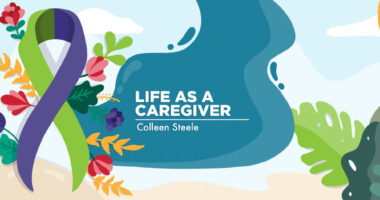My plan for conquering mornings while dealing with chronic pain
How I've learned to face the day, even after a restless night

My alarm screams at 7 a.m., and in a sleepy rebellion, I hit snooze, chuck my phone aside, and dive back under my covers. I’m gearing up for the day like a warrior preparing for battle, still feeling the echoes of last night’s skirmishes. The relentless ache in my legs and back kept me from a peaceful slumber.
This is my normal: battling “painsomnia,” tossing and turning all night, and waking up irritable, achy, and utterly unmotivated to leave the sanctuary of my bed.
Navigating life with chronic pain, pulmonary hypertension (PH), and a host of coexisting conditions is like tiptoeing through a minefield. Scoring a good night’s sleep is an epic challenge.
But here’s my plan: I’m creating a routine that softens the sting of pain and eases the start of my day. Trying not to see mornings as the enemy is a work in progress. And who knows? My little tips and tricks might make your mornings a tad brighter, too.
Bedtime routine
Let’s not forget the power of a solid bedtime routine. Hitting the sheets around the same time each night does wonders for our overall well-being. But when pain flares up and comfort is just a dream, I know all bets are off. In those moments, I focus on finding any sleep-friendly spot and position, usually on the couch. But even small evening rituals can smooth the next morning’s edge.
Plan ahead
Planning ahead can ease the morning rush. It reminds me of helping my daughter, Kayla, prepare for the next day when she was a kid. We’d lay out her clothes, check the calendar, and ensure her backpack was ready.
Even though I’m mostly homebound these days, I still lean on those habits. Creating a to-do list for tomorrow? Check. Preparing for doctor appointments and work tasks? Double check. And if there’s a pillbox to refill, it’s laid out for a post-coffee fill-up.
Preparation and organization keep me sane, especially given my love for speed. Still, my family keeps telling me to slow down, and as a constant work in progress, I’m determined to master that skill with some help from Kayla, who’s now living back at home.
Move my body
Here’s something that’s not so secret: Moving your body can help to relieve pain. It seems counterintuitive, but I’ve found that simple stretches or gentle yoga can dial down the ache, release stiffness, and kick-start my circulation and flexibility. Weaving some stretching or yoga into my morning routine makes a huge difference in how I feel that day. (Always consult your healthcare team before starting any exercise routine.)
Prioritizing self-care is especially important for those of us with chronic pain. This could mean taking breaks throughout the day to stretch, meditate, or even take a few deep breaths. My therapist taught me about a simple but effective three-minute breathing exercise in which I pay attention to my body and what it needs. She suggested I start by doing it for one minute, and now I’ve worked my way up to two minutes.
Mornings are a battle when I’m wrestling with chronic pain, insomnia, and unpredictable PH symptoms. Every day is different, but this plan has been a game changer for me.
Note: Pulmonary Hypertension News is strictly a news and information website about the disease. It does not provide medical advice, diagnosis, or treatment. This content is not intended to be a substitute for professional medical advice, diagnosis, or treatment. Always seek the advice of your physician or other qualified health provider with any questions you may have regarding a medical condition. Never disregard professional medical advice or delay in seeking it because of something you have read on this website. The opinions expressed in this column are not those of Pulmonary Hypertension News or its parent company, Bionews, and are intended to spark discussion about issues pertaining to pulmonary hypertension.








Leave a comment
Fill in the required fields to post. Your email address will not be published.